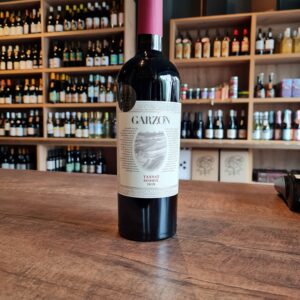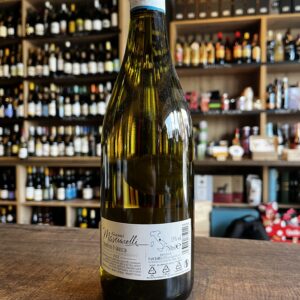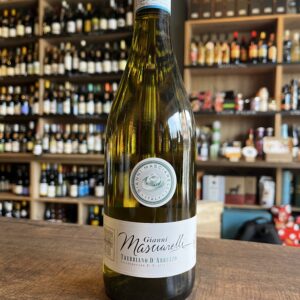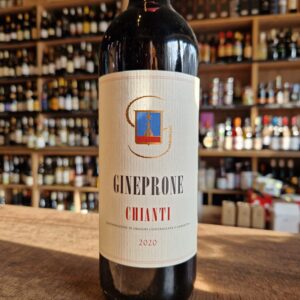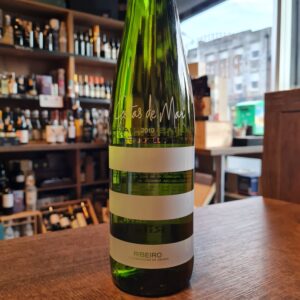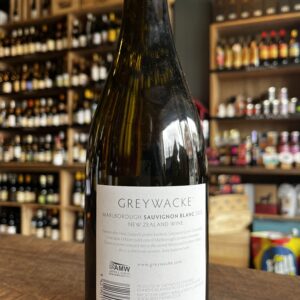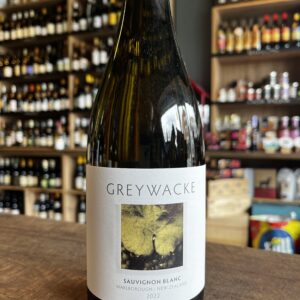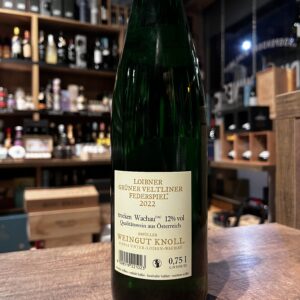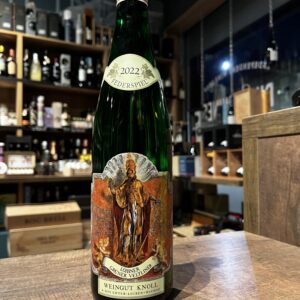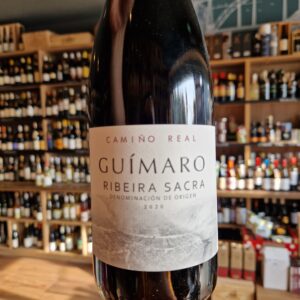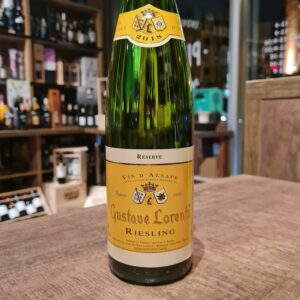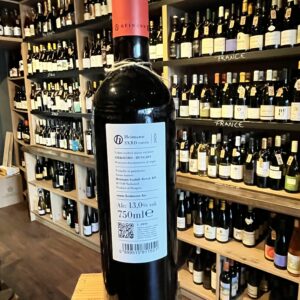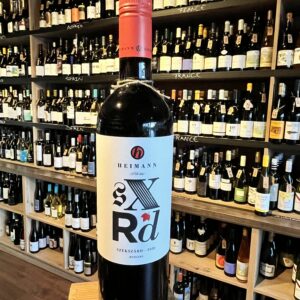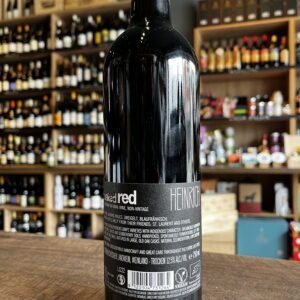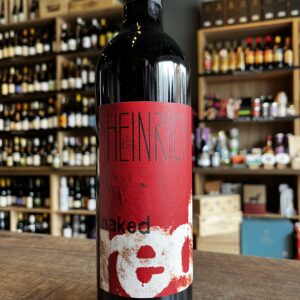-
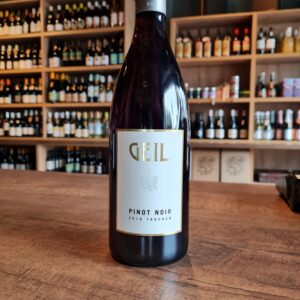 Weingut J. Geil is a winery making approachable, quaffable wines, all along the lines of greatly respecting the nature. This reflects in quality of their fruit and subsequently in their wines. Awarded many trophies each year, Weingut Geil belongs among some of the top German producers. There is nothing to be take lightly about their Pinot Noir, a serious, serious wine. Beautifully earthy and soft, with plenty of ripe wild berries. Excellent balance and considerable length. Accessible and juicy, yet wholeheartedly deep genuinely expressing the terroir of Bechtheim
Weingut J. Geil is a winery making approachable, quaffable wines, all along the lines of greatly respecting the nature. This reflects in quality of their fruit and subsequently in their wines. Awarded many trophies each year, Weingut Geil belongs among some of the top German producers. There is nothing to be take lightly about their Pinot Noir, a serious, serious wine. Beautifully earthy and soft, with plenty of ripe wild berries. Excellent balance and considerable length. Accessible and juicy, yet wholeheartedly deep genuinely expressing the terroir of Bechtheim -
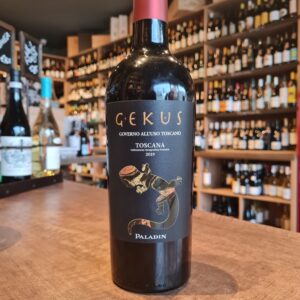 There are many ways in which to fall in love with Tuscany, not the least of which is through the region’s wonderful wines—or its landscape, its people, its food, and its art. Paladin's example of Super Tuscan wines comes in this form. A local take on the classic Bordeaux-style blend of Cabernet Sauvignon, Merlot, and Syrah (and sometimes Cabernet Franc), these wines were developed, in part, as a reaction to the restrictive regulations in Tuscany during the 1970s. At the time they emerged, they were considered some of the region’s best reds. Yet, somewhat ironically, they were technically table wine. In 1994, their Vino da Tavola (VdT) status was elevated to the Indicazione Geografica Tipica (IGT) denomination, which officially endowed these non-traditional wines with a premium quality rating just below the Denominazione di Origine Controllata (DOC), which at that time was reserved for more traditional regional wines. The tonneau used at Paladin hold 2 to 3,000 litters. Very impressive if you compare the barrels with a normal barrique barrel. Even though Gekus is only aged for 3 months, the body that it has is quite pronounced and it is indicative of the extraction done with the grapes. The bottle itself already shows through its weight that we are about to encounter something phenomenal, something heavy, something Super. The palate is complex and you can feel the residual sugar without it being sweet to a point of being unpleasant. Recommended with red meat, it is traditionally very popular with pici (thick spaghetti) with meat sauce. Serve at room temperature.
There are many ways in which to fall in love with Tuscany, not the least of which is through the region’s wonderful wines—or its landscape, its people, its food, and its art. Paladin's example of Super Tuscan wines comes in this form. A local take on the classic Bordeaux-style blend of Cabernet Sauvignon, Merlot, and Syrah (and sometimes Cabernet Franc), these wines were developed, in part, as a reaction to the restrictive regulations in Tuscany during the 1970s. At the time they emerged, they were considered some of the region’s best reds. Yet, somewhat ironically, they were technically table wine. In 1994, their Vino da Tavola (VdT) status was elevated to the Indicazione Geografica Tipica (IGT) denomination, which officially endowed these non-traditional wines with a premium quality rating just below the Denominazione di Origine Controllata (DOC), which at that time was reserved for more traditional regional wines. The tonneau used at Paladin hold 2 to 3,000 litters. Very impressive if you compare the barrels with a normal barrique barrel. Even though Gekus is only aged for 3 months, the body that it has is quite pronounced and it is indicative of the extraction done with the grapes. The bottle itself already shows through its weight that we are about to encounter something phenomenal, something heavy, something Super. The palate is complex and you can feel the residual sugar without it being sweet to a point of being unpleasant. Recommended with red meat, it is traditionally very popular with pici (thick spaghetti) with meat sauce. Serve at room temperature. -
Out of stock
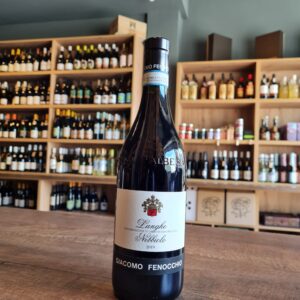 Since 1864, five generations of the Fenocchio family have been producing wine in the heart of Barolo - most of them born in the same yellow house in Monforte d’Alba, at the top of a hillside covered in Nebbiolo grapes. Claudio Fenocchio took upon his father teachings and instead of modernazing the Barolo winemaking techniques, he and with the support of his brothers decided to keep the tradition and build on it. Fenocchio has not taken up organic or biodynamic farming methods but, on the other hand, the estate never took to chemical fertilisers or herbicides, so diverse ground cover and natural predators protect the vines, which grow at their own pace. And in the winery, fermentation is similarly driven by nature and the local microflora. Technically, Claudio has found a way of producing wines which have approachable fruit when young, yet built around a strong tannic structure which does not overwhelm early on, but encourages the development of the wine over years. It is partly due to some green harvesting and careful selection, partly due to enzymatic reaction (ironically) during the long fermentation, which melds the fruit and tannin seamlessly. Barolos are aged for five months in stainless Slovenian oak and a further year in the bottle before release. steel, two years in Slovenian oak and a further year in the bottle before release. More than defining itself as traditional or modern Barolo, Giacomo Fenocchio wine is an expression of terroir.
Since 1864, five generations of the Fenocchio family have been producing wine in the heart of Barolo - most of them born in the same yellow house in Monforte d’Alba, at the top of a hillside covered in Nebbiolo grapes. Claudio Fenocchio took upon his father teachings and instead of modernazing the Barolo winemaking techniques, he and with the support of his brothers decided to keep the tradition and build on it. Fenocchio has not taken up organic or biodynamic farming methods but, on the other hand, the estate never took to chemical fertilisers or herbicides, so diverse ground cover and natural predators protect the vines, which grow at their own pace. And in the winery, fermentation is similarly driven by nature and the local microflora. Technically, Claudio has found a way of producing wines which have approachable fruit when young, yet built around a strong tannic structure which does not overwhelm early on, but encourages the development of the wine over years. It is partly due to some green harvesting and careful selection, partly due to enzymatic reaction (ironically) during the long fermentation, which melds the fruit and tannin seamlessly. Barolos are aged for five months in stainless Slovenian oak and a further year in the bottle before release. steel, two years in Slovenian oak and a further year in the bottle before release. More than defining itself as traditional or modern Barolo, Giacomo Fenocchio wine is an expression of terroir. -
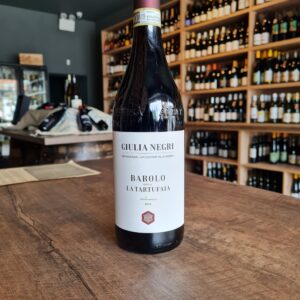 Giulia Negri is a young talent that goes by the nickname "Barolo girl" in the wine world. The grapes for this archetype of a modern-traditional Barolo come from the top vineyards Brunate and Serradenari, the latter is located at an altitude of up to 520 m, and the soils are clayey-sandy. It is an area with a particularly cool and breezy microclimate, which is reflected in the elegant profile of the wines. Climbing towards the top of the hill, the soils become increasingly rich in sandy veins and limestone marl, which contribute to giving Barolo an extreme expressive refinement. The high quality grapes, a work in the cellar that is very respectful of the raw material and aimed at enhancing the typical characteristics of the terroir, allow the creation of a Barolo faithful to the land of origin. Dressed to impress, savory red with a fine fragrance on the palate that doesn't deny its origin and the grape variety, it is of an almost unique elegance and freshness that allows it to be identified as a lively and completely complete top wine even when young. Further years of maturity are certainly not a mistake, because one feels impressively how the complexity increasing with the age joins the finesse and elegance already unmistakable today. One bottle for now and don't put the rest too far away in the cellar, please!
Giulia Negri is a young talent that goes by the nickname "Barolo girl" in the wine world. The grapes for this archetype of a modern-traditional Barolo come from the top vineyards Brunate and Serradenari, the latter is located at an altitude of up to 520 m, and the soils are clayey-sandy. It is an area with a particularly cool and breezy microclimate, which is reflected in the elegant profile of the wines. Climbing towards the top of the hill, the soils become increasingly rich in sandy veins and limestone marl, which contribute to giving Barolo an extreme expressive refinement. The high quality grapes, a work in the cellar that is very respectful of the raw material and aimed at enhancing the typical characteristics of the terroir, allow the creation of a Barolo faithful to the land of origin. Dressed to impress, savory red with a fine fragrance on the palate that doesn't deny its origin and the grape variety, it is of an almost unique elegance and freshness that allows it to be identified as a lively and completely complete top wine even when young. Further years of maturity are certainly not a mistake, because one feels impressively how the complexity increasing with the age joins the finesse and elegance already unmistakable today. One bottle for now and don't put the rest too far away in the cellar, please! -
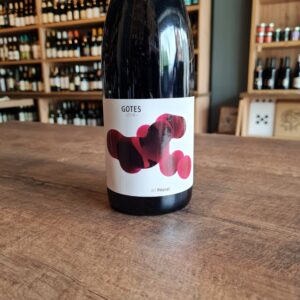 Gotes was the last to be incorporated into the Portal del Priorat's wine family, the Alfredo Arribas project in this denomination, and was envisioned to highlight the freshness of Priorat wines; gotes (drops) of freshness, like dewdrops. Don't expect to find in Gotes the more usual Priorat typicity, with profound maturity and intense minerality. Gotes reflects another type of Priorat wine, refined, in the French style (we mean 'French' as in Burgundy), with a fresh and floral profile. The typicity of Gotes is rooted in the countryside, in its notes of aromatic plants, and in that delightful warmth, because although fresh it is Mediterranean. Another special feature of Gotes is the polish and attention to detail it emits; it's an elegant wine; it has clearly been crafted by experts. If Gotes is refined on the nose, it's positively explosive on the palate! It grows and grows, with lots of volume and a very seductive sweetness and velvety texture. Gotes is fruit, but a very varied fruit cocktail: red fruits, black fruits, both fresh and jammy, the odd juicy stone fruit like mango (the Garnacha always leaves its mark) and fresh grapes that provide a citrusy touch. Ideal with dishes of a upper middle power taste. Will be excellent with a salad of figs and duck ham with Parmesan shavings. It will also be great taking with red meats, duck breast grilled or thigh kid with cider and soft alioli.
Gotes was the last to be incorporated into the Portal del Priorat's wine family, the Alfredo Arribas project in this denomination, and was envisioned to highlight the freshness of Priorat wines; gotes (drops) of freshness, like dewdrops. Don't expect to find in Gotes the more usual Priorat typicity, with profound maturity and intense minerality. Gotes reflects another type of Priorat wine, refined, in the French style (we mean 'French' as in Burgundy), with a fresh and floral profile. The typicity of Gotes is rooted in the countryside, in its notes of aromatic plants, and in that delightful warmth, because although fresh it is Mediterranean. Another special feature of Gotes is the polish and attention to detail it emits; it's an elegant wine; it has clearly been crafted by experts. If Gotes is refined on the nose, it's positively explosive on the palate! It grows and grows, with lots of volume and a very seductive sweetness and velvety texture. Gotes is fruit, but a very varied fruit cocktail: red fruits, black fruits, both fresh and jammy, the odd juicy stone fruit like mango (the Garnacha always leaves its mark) and fresh grapes that provide a citrusy touch. Ideal with dishes of a upper middle power taste. Will be excellent with a salad of figs and duck ham with Parmesan shavings. It will also be great taking with red meats, duck breast grilled or thigh kid with cider and soft alioli. -
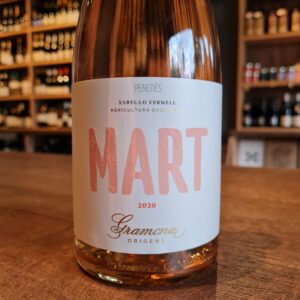 Biodynamic Rosé made from pink skinned Xarel.lo – a variety indigenous to the Penedès region that has been brought back from the brink of extinction. Mediterranean fruits and herbs. Delicate and complex. Recommended spicy dishes such as those found in Japanese, Nikkei, Caribbean and South American cuisine. Rice dishes and seafood. Excellent for aperitifs.
Biodynamic Rosé made from pink skinned Xarel.lo – a variety indigenous to the Penedès region that has been brought back from the brink of extinction. Mediterranean fruits and herbs. Delicate and complex. Recommended spicy dishes such as those found in Japanese, Nikkei, Caribbean and South American cuisine. Rice dishes and seafood. Excellent for aperitifs. -
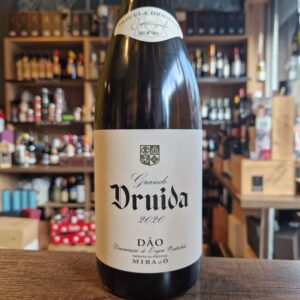 Nuno Mira do Ó is a one-man viticulture and enology powerhouse. A deep-thinking, well-traveled, generous person totally focused on expressing the great terroir of his native country. His peers look his way for guidance because his experience bringing forth wines of place covers almost every major wine region in Portugal. He launched his eponymous brand in the Dão wine region with Druida Encruzado. The wine is named for the ancient Celtic druids whose connection to the earth and plants drove their quest to achieve spiritual equilibrium through the balance of nature. As an enologist and viticulturist, Nuno is in constant search for balance between the soil, the climate, and the vines. Mira do Ó wines seek to attain perfect sensory balance with the utmost respect for nature. This is a pursuit driven by passion and a desire to share wines filled with freshness, elegance, and aging potential. These wines are handcrafted in the Dão from indigenous varietals with vineyards in granite soil sitting above 500 meters of elevation to capture the region’s cool climate. Store the bottles lying down in a cool place (15-17ºC). Drink at 11-12º C and pair with fine food.
Nuno Mira do Ó is a one-man viticulture and enology powerhouse. A deep-thinking, well-traveled, generous person totally focused on expressing the great terroir of his native country. His peers look his way for guidance because his experience bringing forth wines of place covers almost every major wine region in Portugal. He launched his eponymous brand in the Dão wine region with Druida Encruzado. The wine is named for the ancient Celtic druids whose connection to the earth and plants drove their quest to achieve spiritual equilibrium through the balance of nature. As an enologist and viticulturist, Nuno is in constant search for balance between the soil, the climate, and the vines. Mira do Ó wines seek to attain perfect sensory balance with the utmost respect for nature. This is a pursuit driven by passion and a desire to share wines filled with freshness, elegance, and aging potential. These wines are handcrafted in the Dão from indigenous varietals with vineyards in granite soil sitting above 500 meters of elevation to capture the region’s cool climate. Store the bottles lying down in a cool place (15-17ºC). Drink at 11-12º C and pair with fine food. -
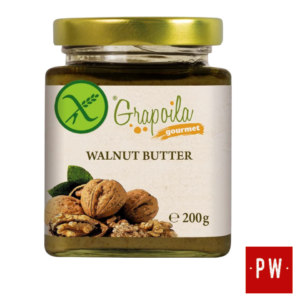 Grapoila uses Zero Waste production meaning, that all created by-products are used for further purposes, nothing goes to waste. Gourmet seed butters are created after settling and filtering the cold-pressed oils, without the use of any additives, preservatives, colouring agents. Due to the gentle process of cold-pressing they fully preserve the valuable ingredients of the high-quality seeds. Its cold-pressed oil content is high and it also contains the fine microparts of the seeds. Almond butter is rich in unsaturated fatty acids, Vitamin E and other antioxidant ingredients. It is a good source of fibre and minerals like potassium, magnesium, calcium, as well as in cholin, that support certain functions of the nervous system. Almond butter is a versatile gourmet food with the natural taste of the raw almonds. It can be used for making creams, fillings, sauces, pastry doughs, or simply adding to shakes and smoothies.
Grapoila uses Zero Waste production meaning, that all created by-products are used for further purposes, nothing goes to waste. Gourmet seed butters are created after settling and filtering the cold-pressed oils, without the use of any additives, preservatives, colouring agents. Due to the gentle process of cold-pressing they fully preserve the valuable ingredients of the high-quality seeds. Its cold-pressed oil content is high and it also contains the fine microparts of the seeds. Almond butter is rich in unsaturated fatty acids, Vitamin E and other antioxidant ingredients. It is a good source of fibre and minerals like potassium, magnesium, calcium, as well as in cholin, that support certain functions of the nervous system. Almond butter is a versatile gourmet food with the natural taste of the raw almonds. It can be used for making creams, fillings, sauces, pastry doughs, or simply adding to shakes and smoothies. -
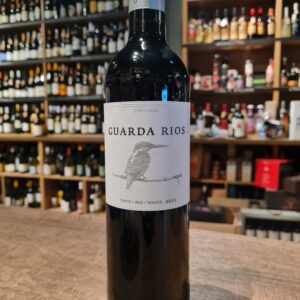 The first Guarda Rios harvest was done in 2006 and, curiously, not in the Alentejo. This wine is associated to the Winemaker and Director of Monte da Ravasqueira, who, in 2012, brought the Guarda Rios with him. Like the birds, this wine migrated and settled next to the dams on a property in Arraiolois, where it found the ideal terroir in which to express all its exuberance and vivacity. The family currently owns 45 hectares under vine in the Alentejo Plains. The highlight of this vineyard is that there are close to 8 diverse soil types and 29 carefully selected plots here. Therefore, it is great for growing quite a few full-bodied grape varietals. The vines are grown at an average height of about 270m above sea level. The Alentejo Plains cover almost one-third of Portugal, and are home to various soil types such as clay, sandy, marble, granite, limestone, shale and more. Thanks to the hot & dry Mediterranean climate in this area, it is ideal for growing some of the rare & indigenous varietals. The native reds grown here are Aragonez, Trincadeira and Alicante Bouschet. Roupeiro, Arinto and Antao Vaz are the native whites grown here. All of these are grown in organized regions along Alentejo. The main regions of the plains where the vines are grown with utmost care & dedication are Borba, Redondo, Reguengos and Evora. These regions are divided based on their climate, soil quality and their ability to create full-bodied & aromatic grapes.
The first Guarda Rios harvest was done in 2006 and, curiously, not in the Alentejo. This wine is associated to the Winemaker and Director of Monte da Ravasqueira, who, in 2012, brought the Guarda Rios with him. Like the birds, this wine migrated and settled next to the dams on a property in Arraiolois, where it found the ideal terroir in which to express all its exuberance and vivacity. The family currently owns 45 hectares under vine in the Alentejo Plains. The highlight of this vineyard is that there are close to 8 diverse soil types and 29 carefully selected plots here. Therefore, it is great for growing quite a few full-bodied grape varietals. The vines are grown at an average height of about 270m above sea level. The Alentejo Plains cover almost one-third of Portugal, and are home to various soil types such as clay, sandy, marble, granite, limestone, shale and more. Thanks to the hot & dry Mediterranean climate in this area, it is ideal for growing some of the rare & indigenous varietals. The native reds grown here are Aragonez, Trincadeira and Alicante Bouschet. Roupeiro, Arinto and Antao Vaz are the native whites grown here. All of these are grown in organized regions along Alentejo. The main regions of the plains where the vines are grown with utmost care & dedication are Borba, Redondo, Reguengos and Evora. These regions are divided based on their climate, soil quality and their ability to create full-bodied & aromatic grapes. -
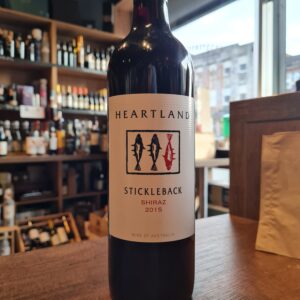 The first Glaetzers settled in the Barossa Valley in 1888 after emigrating from Brandenburg, Germany. The family left Germany on board the Nord-Deutscher Lloyd steamer “Habsburg” and took seven weeks to reach their final destination of Port Adelaide. From here they settled in a country town called Nuriootpa in the Barossa Valley where they started their new life in Australia. The family were some of the earliest recorded viticulturalists in the Barossa Valley and Clare Valley. Barossa Vintners was the first of its kind to conceive as a state-of-the-art winemaking facility with the capacity to make wines, for a core group of top end producers whose fame and demand had grown beyond their winemaking capacities. Completed in 1995, Barossa Vintners has been developed make wines in the most natural possible way. The natural slope of the land allows the winery to be gravity fed and avoid harsh pumping of the grapes and juice. The solar panels allow them to minimize carbon footprint and keep the power bills down. Ben Glaetzer makes wines for his family brand plus Mitolo in McLaren Vale and the Heartland wines from Langhorne Creek. Stickleback is Heartland's entry-level red. Perfect for an evening in front of the chimney , Party , Picknick or a barbecue. Pair it with hearty dishes , spicy food
The first Glaetzers settled in the Barossa Valley in 1888 after emigrating from Brandenburg, Germany. The family left Germany on board the Nord-Deutscher Lloyd steamer “Habsburg” and took seven weeks to reach their final destination of Port Adelaide. From here they settled in a country town called Nuriootpa in the Barossa Valley where they started their new life in Australia. The family were some of the earliest recorded viticulturalists in the Barossa Valley and Clare Valley. Barossa Vintners was the first of its kind to conceive as a state-of-the-art winemaking facility with the capacity to make wines, for a core group of top end producers whose fame and demand had grown beyond their winemaking capacities. Completed in 1995, Barossa Vintners has been developed make wines in the most natural possible way. The natural slope of the land allows the winery to be gravity fed and avoid harsh pumping of the grapes and juice. The solar panels allow them to minimize carbon footprint and keep the power bills down. Ben Glaetzer makes wines for his family brand plus Mitolo in McLaren Vale and the Heartland wines from Langhorne Creek. Stickleback is Heartland's entry-level red. Perfect for an evening in front of the chimney , Party , Picknick or a barbecue. Pair it with hearty dishes , spicy food -
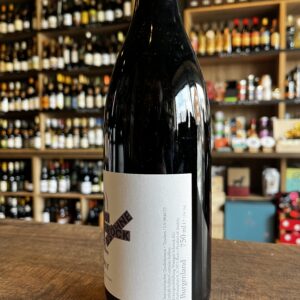
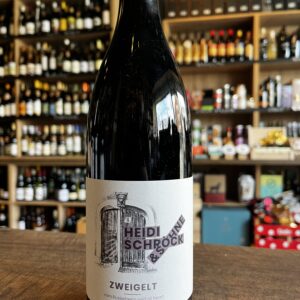 Heidi took over her family’s 10 hectare estate in 1983, in the famous village of Rust, Burgenland, just five miles from the Hungarian border. Her south-east-facing vineyards along the western banks of Lake Neusiedl form a semi-amphitheatre, providing considerably more sunlight hours compared to the rest of Austria. The soils here are sandy with clay, gravel, grey quartz and schist. Heidi sustainably cultivates the classic Austrian varieties, Zweigelt, Blaufränkisch and St Laurent, as well as pioneering the revival of traditional varieties, such as Furmint, better known today across the Hungarian border. Heidi, Georg and Johannes. One woman, two young men. Mother and sons. In an ancient winegrower´s estate in the center of the renowned Freistadt Rust, the vinophile trio produces some of the most sought after white, rosé, red and sweet wines made in Austria - principally from autochthonus varieties of the region. The shining stars of the company, Schröck sweet wines, have represented the house for many years. Liquid elegance dressed in gold. Heidi Schröck & Söhne. A small, fine established company with big, aspiring ideas. Open, inspired, passionate. And pretty delicious
Heidi took over her family’s 10 hectare estate in 1983, in the famous village of Rust, Burgenland, just five miles from the Hungarian border. Her south-east-facing vineyards along the western banks of Lake Neusiedl form a semi-amphitheatre, providing considerably more sunlight hours compared to the rest of Austria. The soils here are sandy with clay, gravel, grey quartz and schist. Heidi sustainably cultivates the classic Austrian varieties, Zweigelt, Blaufränkisch and St Laurent, as well as pioneering the revival of traditional varieties, such as Furmint, better known today across the Hungarian border. Heidi, Georg and Johannes. One woman, two young men. Mother and sons. In an ancient winegrower´s estate in the center of the renowned Freistadt Rust, the vinophile trio produces some of the most sought after white, rosé, red and sweet wines made in Austria - principally from autochthonus varieties of the region. The shining stars of the company, Schröck sweet wines, have represented the house for many years. Liquid elegance dressed in gold. Heidi Schröck & Söhne. A small, fine established company with big, aspiring ideas. Open, inspired, passionate. And pretty delicious -
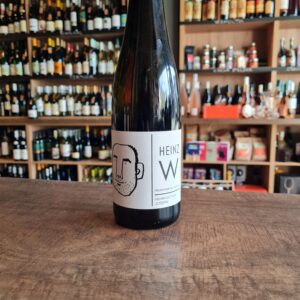 Grüner Veltliner is Austria's most famous grape variety and is considered Austria's national grape variety. The best Grüner Veltliner wines come from the northeast of the country, especially regions such as the Wachau, Kamptal and Kremstal bordering the Danube River. This wine made by Weingut Weixelbaum the winery of Heinz and Gabi Weixelbaum. Located in the village of Strasser in the Austrian Kamptal. It is a medium sized, typical Austrian winery. A family business that is passed on from generation to generation. Heinz Weixelbaum has very good vineyards on soils of 'urgestein' and 'loess', Heinz also dares to prune a lot in the spring, so that his wines are more powerful than most from the region. The Weixelbaum family only makes wine from grapes from its own 22 hectares of vineyards. Everything is done by hand and the cellar is full of the most modern equipment. The vineyards in the Kamptal owe their name to the river Kamp that flows through the area. It is one of the most prestigious Austrian wine districts. In this wine-growing region, which is part of the federal state of Lower Austria, warm and sunny summer days ensure optimal ripening of the grapes. In addition, a cooling breeze during the night guarantees flawless aromas and refined acids in the wines. The vineyards are mainly terraced along the steep banks of the river. The soil consists largely of loess, loam, gravel, sandstone and shale. Because the roots of the vines can reach up to six meters deep, the wines get a different character on every surface.
Grüner Veltliner is Austria's most famous grape variety and is considered Austria's national grape variety. The best Grüner Veltliner wines come from the northeast of the country, especially regions such as the Wachau, Kamptal and Kremstal bordering the Danube River. This wine made by Weingut Weixelbaum the winery of Heinz and Gabi Weixelbaum. Located in the village of Strasser in the Austrian Kamptal. It is a medium sized, typical Austrian winery. A family business that is passed on from generation to generation. Heinz Weixelbaum has very good vineyards on soils of 'urgestein' and 'loess', Heinz also dares to prune a lot in the spring, so that his wines are more powerful than most from the region. The Weixelbaum family only makes wine from grapes from its own 22 hectares of vineyards. Everything is done by hand and the cellar is full of the most modern equipment. The vineyards in the Kamptal owe their name to the river Kamp that flows through the area. It is one of the most prestigious Austrian wine districts. In this wine-growing region, which is part of the federal state of Lower Austria, warm and sunny summer days ensure optimal ripening of the grapes. In addition, a cooling breeze during the night guarantees flawless aromas and refined acids in the wines. The vineyards are mainly terraced along the steep banks of the river. The soil consists largely of loess, loam, gravel, sandstone and shale. Because the roots of the vines can reach up to six meters deep, the wines get a different character on every surface. -
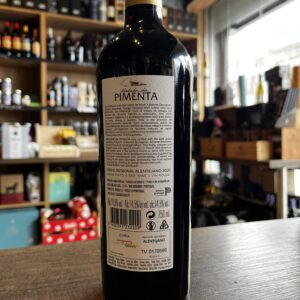
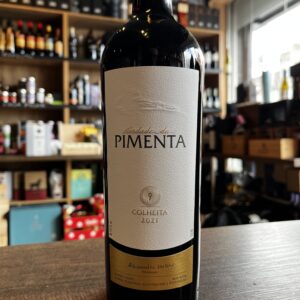 Casa Relvas is a family-owned winery that was born out of a desire to give continuity to the family history associated with the land for five generations. The project began in 1997, Alexandre Relvas, who learned about his extensive family roots in the estate "Herdade De Sao Miguel" in Alentejo. In 2001, the first 10 hectares of vineyards were planted. Next year, Nuno Franco, a consultant in viticulture and enology, joins the project, he continues to plant another 25 hectares of vineyards. In 2003, a new winery was built on the estate with the possibility of vinification of 500 tons of grapes. It was headed by winemaker Fernanda Gomes. The following year, the first wine of the farm was launched on the market. By 2010, wine sales doubled to 1 million bottles. The following year, the company acquired the estate "Herdade da Pimenta" with 65 hectares of vineyards and a winery that can process 2.5 tons of grapes. Since 2016, the company also began to grow olive trees. The mission of Casa Relvas is to produce quality wines that accompany every moment of life, wines that can bring special pleasure from food, celebration, meeting with friends and beautify the memories of bright moments of life. This wine accompanies red meats, roast beef and grilled meats.
Casa Relvas is a family-owned winery that was born out of a desire to give continuity to the family history associated with the land for five generations. The project began in 1997, Alexandre Relvas, who learned about his extensive family roots in the estate "Herdade De Sao Miguel" in Alentejo. In 2001, the first 10 hectares of vineyards were planted. Next year, Nuno Franco, a consultant in viticulture and enology, joins the project, he continues to plant another 25 hectares of vineyards. In 2003, a new winery was built on the estate with the possibility of vinification of 500 tons of grapes. It was headed by winemaker Fernanda Gomes. The following year, the first wine of the farm was launched on the market. By 2010, wine sales doubled to 1 million bottles. The following year, the company acquired the estate "Herdade da Pimenta" with 65 hectares of vineyards and a winery that can process 2.5 tons of grapes. Since 2016, the company also began to grow olive trees. The mission of Casa Relvas is to produce quality wines that accompany every moment of life, wines that can bring special pleasure from food, celebration, meeting with friends and beautify the memories of bright moments of life. This wine accompanies red meats, roast beef and grilled meats.


